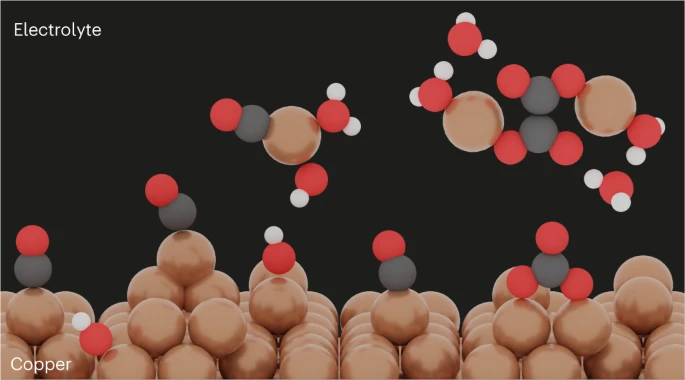Understanding metal surface reconstruction is of the utmost importance in electrocatalysis, as this phenomenon directly affects the nature of available active sites. However, its dynamic nature renders surface reconstruction notoriously difficult to study. Here, we report on the intermediates that drive the rearrangement of copper catalysts for the electrochemical CO2 reduction reaction (CO2RR). Online MS and UV–vis absorption spectroscopy data are consistent with a dissolution–redeposition process, as previously demonstrated by in situ electron microscopy. The data indicate that the soluble transient species contain copper in the +1 oxidation state. Density functional theory identifies copper–adsorbate complexes that can exist in solution under operating conditions. Copper carbonyls and oxalates are suggested as the major reaction-specific species driving copper reconstruction during CO2RR. This work motivates future methodological studies to enable the direct detection of these compounds and strategies that specifically target them to improve the catalyst operational stability.
